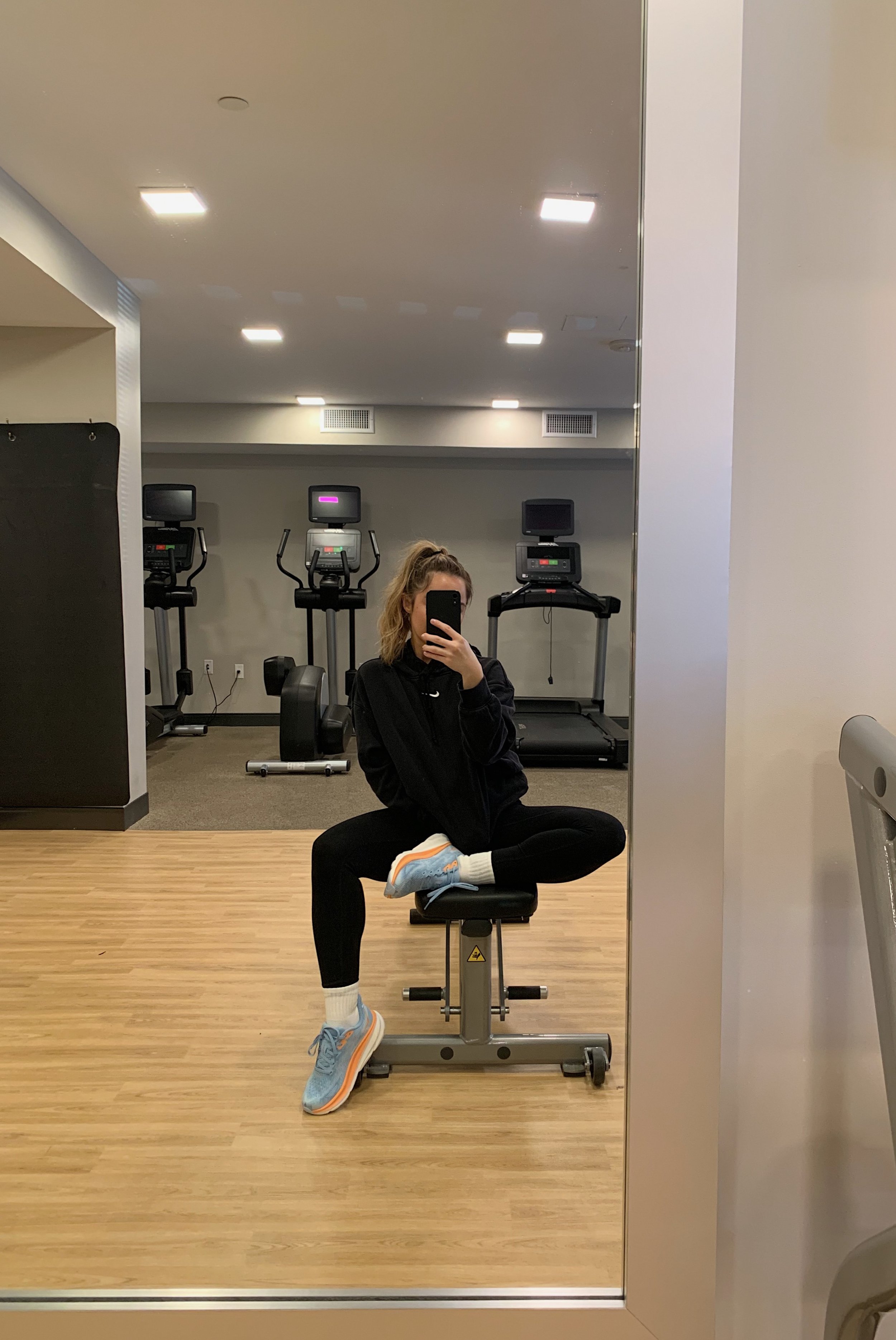How to Stop Self-Sabotaging
I want to share a journal prompt exercise that has truly changed my life by helping me break out of ruts, get out of my own way, and make consistent, impactful strides towards my goals. Self-help can be preachy and sometimes regurgitates the same surface-level advice; we’ve all been told that walking daily is important, but “just start” or “make time for it” isn’t advice that gives you a clear roadmap for actually making 10k steps a persistent habit.
You can want to change, but what turns intent into action is identifying the patterns that have kept you stuck in the same rituals and routines, and then coming up with a new set of patterns that lead you down a different road – the road towards your goal or desired behavior.
I refer to this journal prompt as SIDs, or seemingly irrelevant decisions. SIDs are what keep us stuck in patterns. We make SIDs daily, but they’re often so microscopic that we don’t pay much attention to them.
For example, you don’t skip the gym at 3pm when you’re tired; you skip it when you decide to stay up past your bedtime and then eat junk food for lunch, which leaves you feeling lethargic and unprepared for working out. You don’t fail to quit smoking when you light up another cigarette; you fail when you let yourself get worked up to the point of feeling like you need to smoke, rather than engaging in a healthier stress management technique.
Forming new habits and making them stick can be tough. You may have heard that it takes 21 days to form a habit, and no one says those 21 days are easy. The novelty of change and motivation you feel in the beginning can set you on the right path, but what paves the way for lasting change requires more than determination, sheer will, or knowing your “why.”
This journal prompt encourages you to dig deeper into your life as it is right now, exploring why you continue to self-sabotage and make choices that get in the way of your goals, including the subconscious, auto-pilot decisions that fly under the radar. By recognizing what currently triggers you or sets you off track, you can then come up with a plan to break those long-standing patterns, heal your triggers, and find healthier coping mechanisms.
To do this, you’re essentially going to trace your steps. This trains your brain to notice the emotional cues that influence the choices you make prior to the repeated unwanted pattern, so you can come up with a different action plan that’s aligned with your new goals.
journal prompt to stop self-sabotaging
step one: identify the behavior you want to change.
For example, you might want to stop ordering Door Dash every day, vaping, or letting work stress ruin the rest of your day. This exercise also works for positive habits you want to start, whether it’s going to pilates or waking up earlier.
step two: trace your steps the last time (or few times) you engaged in the behavior.
Get detailed; these steps are the patterns that are keeping you from making the changes you want in life. Don’t judge yourself during this part of the exercise. You might find that your steps sound like excuses or justifications for making a choice that goes against your goals, but you need to know why you made those choices in order to come up with a plan for change, which we go over next. The more microscopic you get in identifying each pattern now, the easier it will be to come up with a realistic plan comprised of new, healthier coping mechanisms and action steps. Bonus points if you can name the emotion(s) or feeling(s) involved.
An example of this for those who want to stop a habit would be:
I want to stop eating junk food.
Yesterday, I went to work and my boss gave me another project on top of all of my other responsibilities. He didn’t care that I already have too much on my plate, so there’s no way to not do this new task.
This immediately left me feeling drained, and the last thing I wanted to do after work was cook dinner and then have to do the dishes and put everything away.
I drove to In-N-Out for dinner, and decided to get an extra milkshake for later since I’m already eating junk food for dinner.
Alternatively, for someone struggling to get up earlier, their step two might look like:
I want to wake up early.
Last night, I started watching my favorite show while I ate my dinner, and the episodes were so good that I couldn’t stop watching on a cliffhanger.
I got into bed, and decided I could watch one more episode, which turned into three more to finish the season.
I stayed up too late, so I woke up feeling tired when the “early” alarm went off.
I knew I had a long day ahead of me that I needed to be rested for, so I snoozed it and slept in until my standard alarm, deciding I’d do better tomorrow.
step three: come up with an alternative plan to manage triggers and redirect old patterns you identified in step two, comprised of small steps that feel easy to you.
This will become the new pattern you engage in, leading you to your new habit. I’ve found that the easier I make this, the better foundation I lay in making the change stick. I can build upon it more in the future, but I truly need baby steps in the beginning in order to build momentum.
Following the first example of quitting junk food, step three might look like:
Deep down, I know that my work stress caused me to turn to junk food.
Talking to my boss and eliminating some of my responsibilities is not an option, but I won’t let work sabotage the quality of my outside life any longer.
I still have a lot on my plate, so it’s unrealistic that I will cook from every night.
What I can do to start is meal-prep on the weekends, or a few days in advance. For nights when those dinners do not sound good, I can have frozen meals that I like but aren’t completely unhealthy in the freezer so that I eliminate any reason to go to the drive thru.
You’re aiming for progress over perfection; be gentle with yourself as you make these big changes and find what works for your life right now. You can re-evaluate and strengthen your plan over time, such as by eliminating frozen meals, but the odds of abandoning your goal are higher if you think you’ll go from takeout three times a week to cooking every night, especially since you’ve identified that stress is a major trigger for turning to junk food.
For waking up early:
I will still watch my show before dinner and while I eat.
After dinner, I will finish whatever episode I am on, and then I will turn the TV off completely.
I will read, do a puzzle, color, talk to a friend, or spend extra time on my self-care routine until bedtime - anything but watch TV.
You might say that letting yourself finish the episode after dinner is too tempting. It’s important to be honest with yourself and know what parameters are realistic yet firm. If you stop halfway through an episode, will it stay on your mind all evening, leading you to binge-watch right before bed? Or are you okay to finish the episode, as long as you don’t auto-play the next episode? Depending on what you’re trying to change, you might need to be stricter with yourself.
Each habit and pattern is different; being honest with yourself and repeating this journal prompt exercise as needed will help you create and stay on a new path towards the habits and lifestyle you ultimately want.





